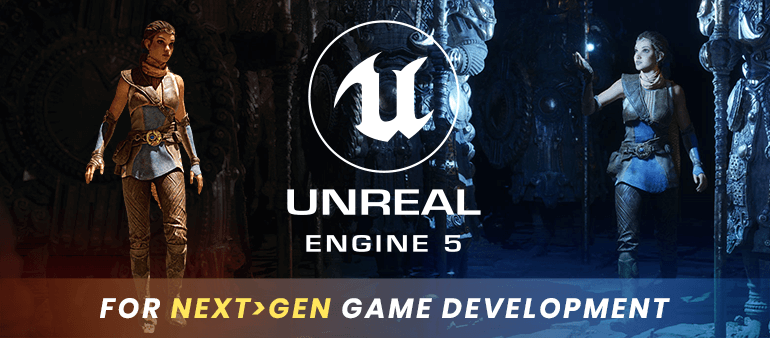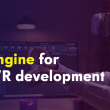WOW! That’s all I could say after watching the first look of Unreal Engine 5 which Epic Games released on May 13. The main highlights of the show were Nanite and Lumen - the next-gen technology to run video games breathtakingly similar to Hollywood movies. With UE5 slated to release in 2021, Epic Games is promising big to address the biggest concerns of developers they face while building high-quality AAA games - too slow (say 7 years to develop) and huge cost of assets development. Of course, majorly with Nanite and Lumen technology.
You must watch the video if you haven’t already and be a part of this exciting discussion over Epic’s solid attempt to make it so easy and fast for developers to build heavy hitting titles like never before.
Link to the video: Unreal Engine 5 Revealed! | Next-Gen Real-Time Demo Running on PlayStation 5
Nanite and Lumen Technology: Check Out UE5’s Unique Features
Let’s first talk about the two key technologies that will be coming loaded with Unreal Engine when it fully launches in 2021.
Lumen - A global illumination system
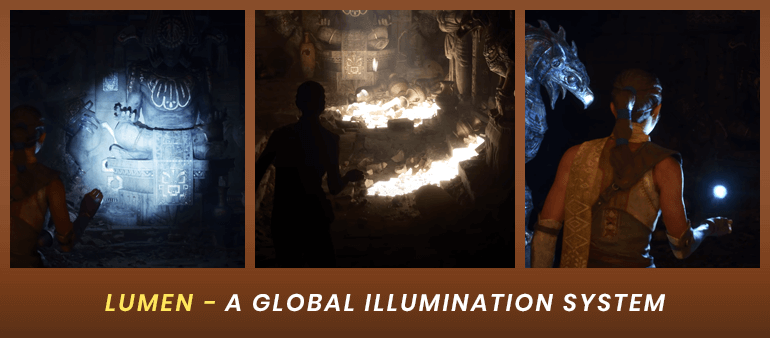
Lumen is the technology that will allow developers to create fully dynamic lighting in real-time, much similar to graphics generated by advanced computers for high-quality animation and film production. Lumen will also save a lot of time that goes in light-adjustment and iteration. Unlike current game engines, game app developers will no longer be required to design lightmaps by hand and wait for lightmap bakes to finish. Instead, artists will be able to simply place a light source with the engine and move it inside the Unreal Editor to immediately see how the lighting will look when the game is run on console.
The ability to use dynamic lighting will make it easy for developers to move light sources around during the gameplay and see the light bending around obstructions, which is quite a task to perform with the static light sources found in current engines. Lumen-powered games will immediately react to scene and light changes and we have already got a glimpse of that in the video. The gaming space is not completely new to those kinds of effects, though, as Nvidia has continuously advanced with its real-time ray-tracing capabilities of its PC graphics card line for years now. You would agree if you have played Minecraft with the right PC hardware. However, what’s new is using those effects on console hardware which Epic said is “diffuse interreflection with infinite bounces and indirect specular reflections in huge, detailed environments, at scales ranging from kilometers to millimeters.”
With Lumen, it will be really quick to set up lighting and limit its behaviour to precisely match your game. Real-time lighting could also lead to new gameplay ideas like a player holding a candle turning around a corner to reveal an enemy. With global illumination, game makers can expect to build all sorts of games, including physics puzzlers, dynamic action games, sandboxes of user-generated content, and many more.
Nanite - virtualized micropolygon geometry
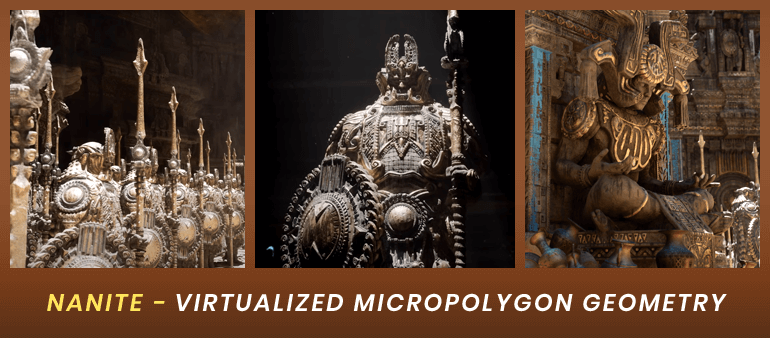
Nanite is the most unique offering of UE 5, allowing game developers to automatically and massively scale in-game art assets. With Nanite’s virtualized micropolygon geometry, artists get full freedom to create as much geometric details as the eye can see. Currently, what game artists often do is they reduce different levels of detail (LODs) for in-game 3D models, each having fewer polygons and smaller textures than the last. You can notice those low-poly models when an object is at a good distance from the in-game camera. This practice is currently being followed to save memory space and rendering time in complex scenes, without compromising much on frame quality. But, Nanite will change this drastically by allowing artists to import movie-quality models comprising hundreds of millions and even billions of polygons from a library like Quixel Megascans, ZBrush sculpts, CAD data and photogrammetry scans directly into the game engine. As Nanite scales LODs in real time, there will be no need for polygon count budgets, polygon memory budgets and draw count budgets. UE5 will itself do the job of creating LOD models to match the scene on the target hardware without dropping the quality.
Nanite will prove to be a game changer by allowing developers to have as many number of objects they want in a scene, an ability that is greatly limited by current game engines. For instance, the scenes in the demo (which ran on next-gen Playstation 5 hardware) have more than a billion objects. As Epic VP of Engineering Nick Penwarden puts it, “As you're laying out and building your scene you can kinda just build it out organically, the way that feels right, the way that you want to, and you don't have to go through this complex optimization pass of optimizing the scene to try and get under a draw call budget of a couple thousand.” UE5 will make the use of ultra-fast bulk storage SSDs for next-gen consoles to put tens of billions of polygons for even a moderately complex scene without having to worry about overloading the system memory and overwhelming the "draw count" budget needed to render the scene in time for the next frame. So, with Nanite technology, Epic is trying to make it easier for game developers to build higher-quality, higher-fidelity environments with less work and budget.
Animation System to Adapt Complex Physics
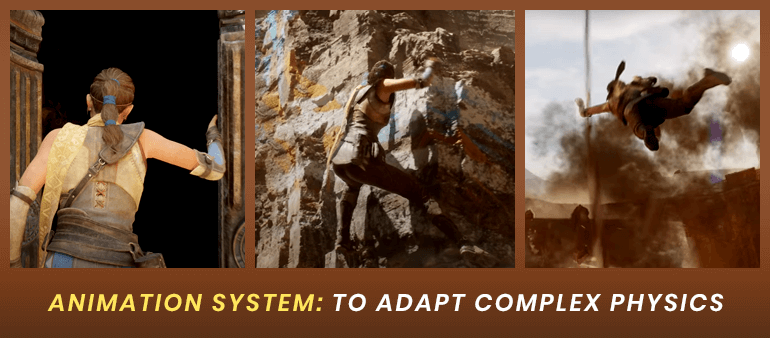
Epic is also providing UE5 the ability to make characters interact more realistically with complex environments. The demo shows how well the animation system adapted productive footsteps and motion warping to dynamically modify inverse kinematics (IK) and body position. The character so realistically interacts with the environment whether it’s climbing or touching the door, everything looks natural. This will surely inspire game developers to bring movies-like qualities in video games of tomorrow.
Cross Generational
This is interesting as some of us might have thought after watching the video that UE5 is only a next-gen exclusive proposition. But that’s not completely true as Epic Games CEO Tim Sweeney said that the aim is to build the highest-quality content possible and let UE5 scale down to every platform automatically. However, there will be more traditional rendering pipeline for the platforms that don’t have next-gen capabilities like Playstation 5. For such platforms, the assets you have built will be rendered after scaling them down to more traditional LODs. “So there’ll be a version of this demo that you could run on Android devices from three years ago. It will have a much lower polygon detail, but it will be the same scene and you could develop the same game,” said Sweeney.
For developers using the current version (4.25) of UE4, Epic has promised that they will be able to port their games to UE5 and next-gen hardware in the future. And Epic is going to prove this by moving Fortnite this year to UE5 over the course of next year. “With us migrating Fortnite to UE5, we will be supporting all of the platforms we currently support as wells as next-gen platforms on UE4 and UE5. So we will be shipping our own game across all at that point 9 platforms on UE5, early on in UE5's lifetime,” said Penwarden. By removing the content scalability problem, any game that looks fantastic on a high-end console can also work on a smartphone. These are big possibilities that UE5 promises to bring to help the gaming industry expand its reach from just the hardcore gaming audience. With UE5, developers will be able to build any content or asset once and run everywhere. Epic said to The Verge in an interview that UE5 will support next-generation consoles, current-generation consoles, PC, Mac, iOS, and Android.
Conclusion
With UE5 set to release in the mid of 2021, Epic has nicely set the tone to build next-gen games for next-gen hardware without having a 1,000-person team. Nanite and Lumen are revolutionary technologies aimed at building dynamic lighting and high count poly assets without being too slow, labour intensive and costly. UE5 features will also include Niagara VFX to allow particles to talk to each other to create effects that look real (remember the character moving on water and insects flocking in the demo video). With UE5, Epic wants developers to think of games as holistic products that can work on both smartphones and high-end devices. Well, it remains to be seen how exactly things will pan out after the release of UE5, but we can expect that it will make it much easier for game developers to build next-gen titles. To encourage developers to use UE all the more, Epic has also revised its royalty fee policy. Now, UE, which already comes for free, will charge nothing until you make whooping $1mn in game revenue, which was $3,000 per quarter earlier. The big change in the pricing policy can give Unity a tough run for their money by letting developers embrace UE5 for a radical change in how they built video games so far that looked AAA.
Like you, we at Logic Simplified are also excited about how UE5 will change the future of game development. We have already used previous versions of UE to help various clients shape their gaming idea into a reality and now eagerly look forward to using UE5 when it comes out to create some highly immersive next-gen titles that would look like movies. If you want to start now, the good news is you can with UE4 as the game can later be easily ported to UE5. We are a team passionate about gaming and committed to help game visionaries build their dream games even from scratch. To find out if it will be yours, please write to us at enquiry@logicsimplified.com, and we will get back to you shortly with our game development services we are proud of.
 Get a Quote
Get a Quote

